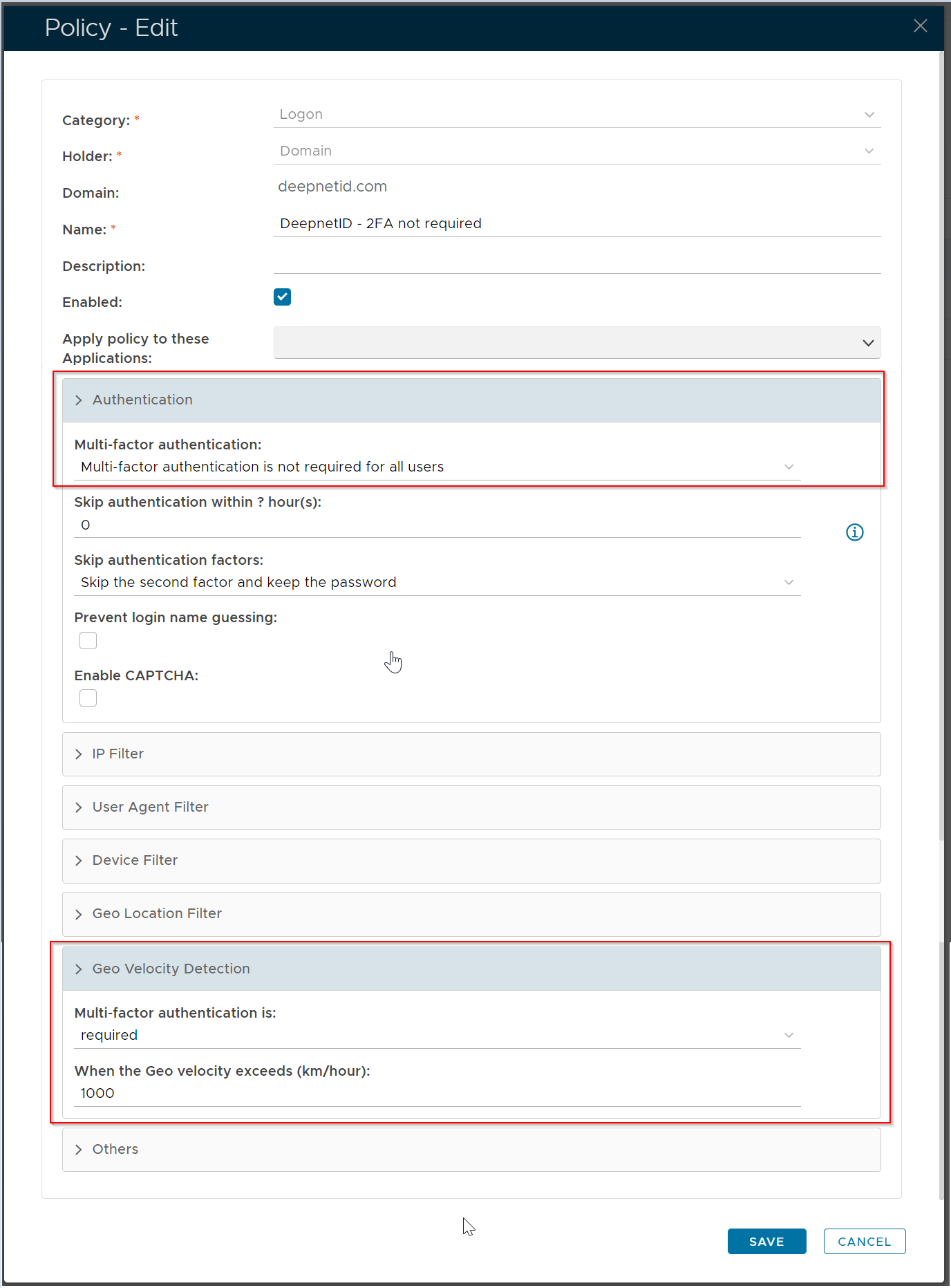Geo-velocity detection allows you to authenticate a user based on the distance and the time gap between the user's current location and where the user last logged in from. You can leverage this information as a criteria for granting access to the protected resource.
Geo-velocity is usually calculated as maximum km-per-hour. This allows you to determine how fast a user can travel from one place to another to successfully sign in within a specific time duration.
A pre-requisite to implementing the geo-velocity detection is to have the geo-location data.
The geo-location feature allows you to identify the physical location of the user. This is usually determined by obtaining the IP address of the device being used by a user to attempt a login. This data is then used to calculate the distance between two consecutive login attempts.
Adaptive authentication by geo velocity is implemented by using the Geo Velocity Detection function in the Logon policy. The example below shows that MFA is generally not required unless the user's travel velocity exceeds 1,000km per hour.
